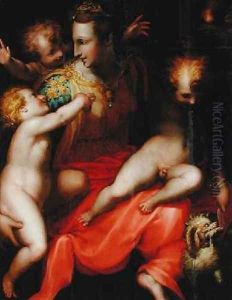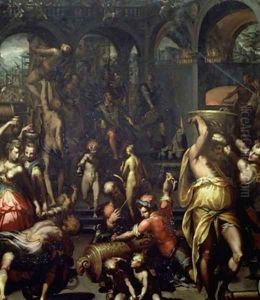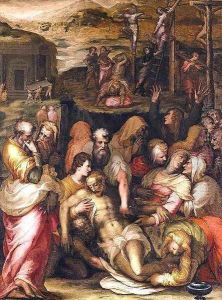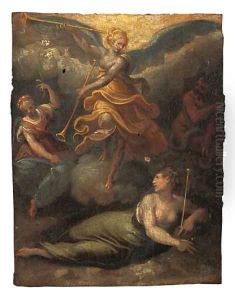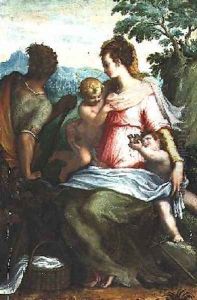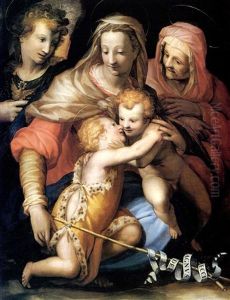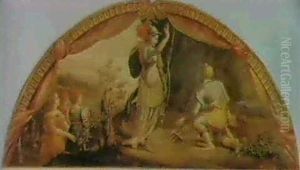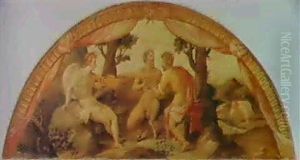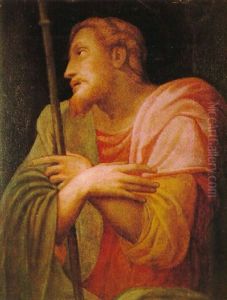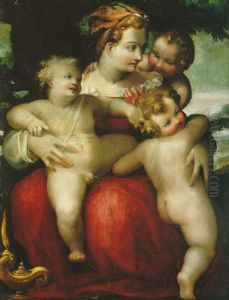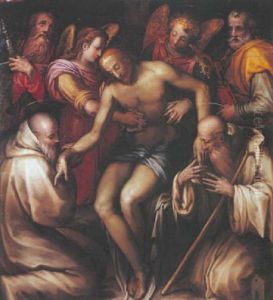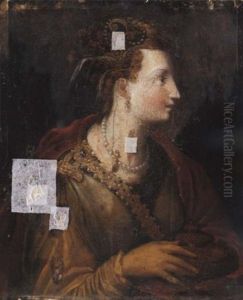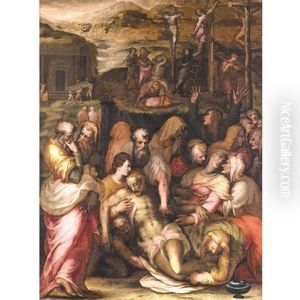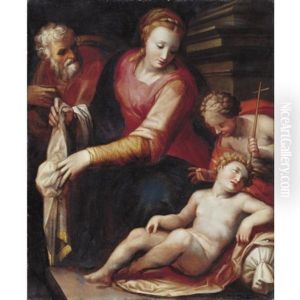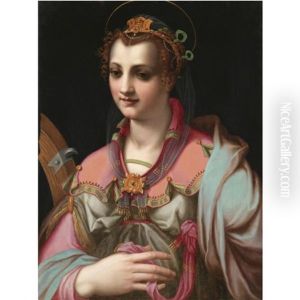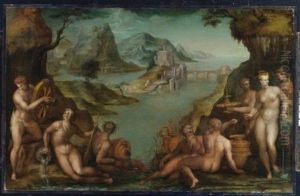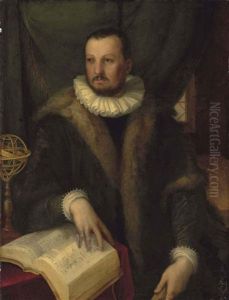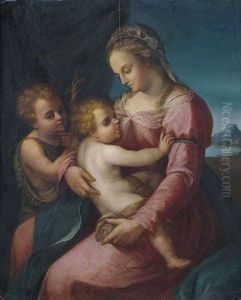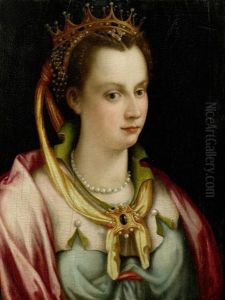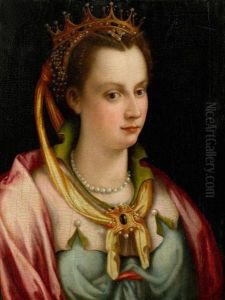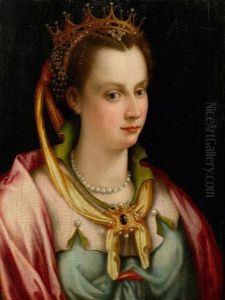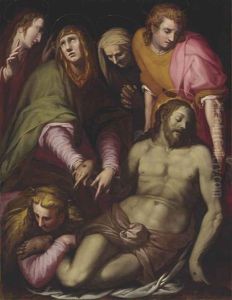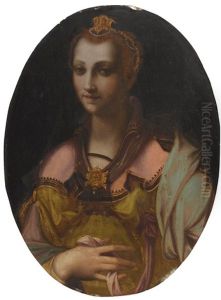Francesco (Il Poppi) Morandini Paintings
Francesco Morandini, better known as Il Poppi or Il Poppi da Poppi, was an Italian painter of the Renaissance period, born in 1544 in Poppi, near Arezzo, in the region of Tuscany. He is often not as widely recognized as his contemporaries from the Florentine school, yet he contributed significantly to the art of his time, primarily within the Mannerist style.
Il Poppi was initially trained by his father, the painter Jacopo Morandini. His early work was influenced by the prominent Mannerist artists of the time, such as Jacopo da Pontormo and Rosso Fiorentino. He later moved to Florence to further his training and career, where he became associated with the Medici court and worked under the guidance of Giorgio Vasari, a leading painter and architect of the time, known also for his biographies of Italian artists. Under Vasari's influence, Morandini's work began to exhibit the refined elegance and complexity characteristic of Mannerist aesthetics.
Throughout his career, Morandini painted a number of religious subjects and was known for his frescoes, altarpieces, and smaller devotional paintings. His style is marked by elongated figures, sophisticated color palettes, and a certain ethereal quality. One of his significant works is the fresco cycle in the Capella del Giglio in the Basilica of Santa Maria Novella in Florence, which demonstrates his skill in large-scale compositions and his ability to convey narrative through art.
Morandini also worked on various projects in and around Florence, contributing to the rich tapestry of Renaissance art in the region. Despite his accomplishments, he did not achieve the same level of fame as some of his contemporaries, possibly due to the overshadowing brilliance of artists like Michelangelo, Leonardo da Vinci, and Raphael during the High Renaissance, followed by the emerging Baroque style that began to take hold towards the end of his life.
Francesco Morandini died in 1597 in Florence. His works remain an integral part of the study of Mannerist painting in the late Renaissance period, offering insights into the transitional period of European art history between the High Renaissance and the Baroque era. His legacy is preserved in his frescoes and paintings, which continue to be admired for their beauty and historical value.
